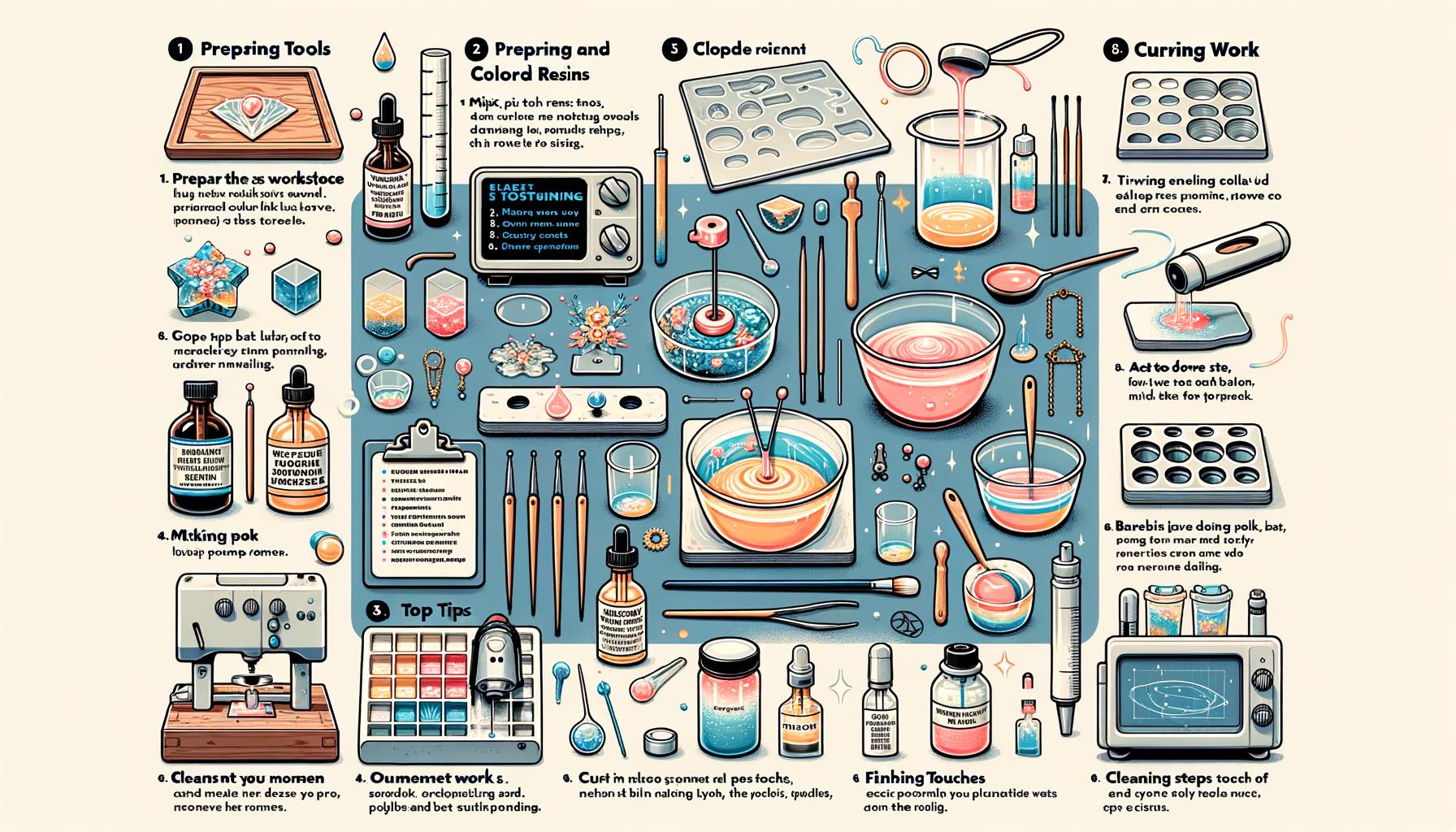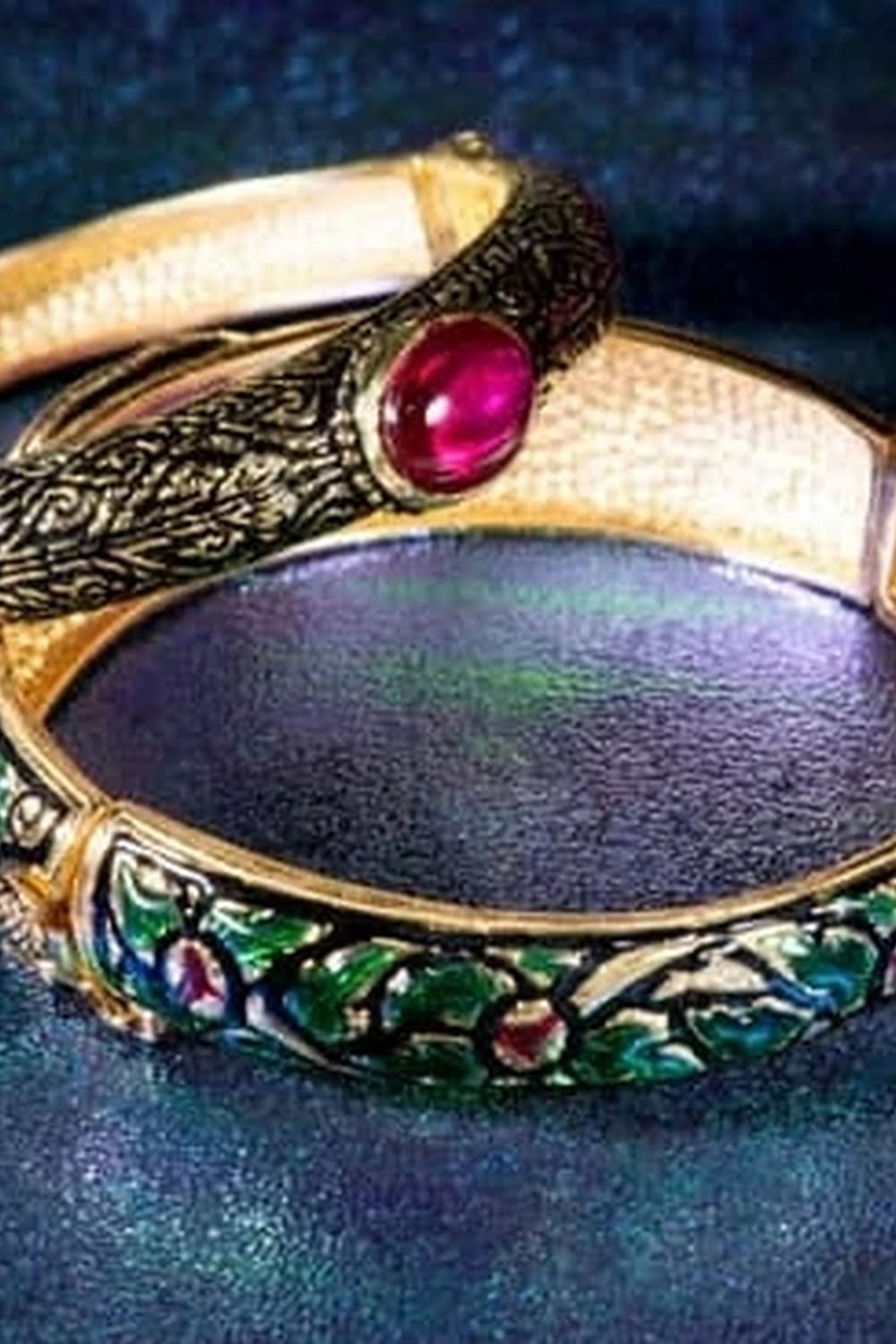Resin jewelry making has taken the DIY craft world by storm, captivating both novices and seasoned artisans with its endless creative possibilities. Understanding the basics of resin jewelry making: what you need to know is essential for anyone looking to delve into this fascinating hobby. Whether you’re aiming to create stunning earrings, vibrant pendants, or unique statement pieces, learning about resin’s versatility can open up a new realm of artistic expression.
One reason why resin jewelry has surged in popularity is due to its accessibility and relatively low barrier to entry. With the right materials and a bit of guidance, even beginners can achieve professional-looking results from their first few attempts. Resin allows crafters to encapsulate various inclusions like dried flowers, glitter, and tiny trinkets, making it possible to create totally personalized pieces that hold sentimental value.
In this post, you’ll find a comprehensive guide covering everything from understanding what resin jewelry entails to safely handling materials and mastering advanced techniques. We’ll walk you through each step of the process so that by the end you’ll not only have created your own piece of wearable art but also gained valuable skills and insights for future projects.
What Is Resin Jewelry?
Resin jewelry is a unique and versatile form of handcrafted adornment, often characterized by its glossy finish and ability to encapsulate various materials. At its core, resin is a synthetic material that can be molded into a variety of shapes, making it ideal for creating everything from pendants and earrings to bracelets and rings.
In jewelry making, resin serves as both the canvas and the medium, allowing artists to preserve delicate items like dried flowers or tiny charms within a durable, glass-like structure.
Types of Resin Used in Jewelry Making
When diving into the basics of resin jewelry making: what you need to know includes understanding the types of resin available. The most commonly used resins are epoxy resin and UV resin. Epoxy resin consists of two parts: the resin itself and a hardener, which must be mixed together before use.
Once combined, this mixture undergoes a chemical reaction that results in a solidified form after several hours of curing. Epoxy resin is favored for its durability and clarity but requires precise mixing ratios and longer curing times.
UV resin, on the other hand, offers convenience due to its quicker curing process under ultraviolet light. Unlike epoxy resin, UV resin does not require mixing two components; it’s ready to use straight out of the bottle. This type allows for fast creation times but typically cures with a slightly less sturdy finish compared to epoxy versions.
Why Choose Resin for Jewelry Making?
The allure of working with resin in jewelry-making lies in its incredible adaptability. Artists can embed all sorts of inclusions such as glitter, pigments, tiny photographs, or nature objects like leaves and shells within the transparent medium to create custom pieces that are truly one-of-a-kind. Additionally, its lightweight nature ensures comfort while wearing these statement pieces.
Choosing between different types of resins depends largely on your specific needs-whether you prefer something quick-cure such as UV for immediate projects or more robust like epoxy for long-term wearability. Regardless of choice though; mastering either kind opens up endless creative possibilities tailored uniquely through each artisan’s vision utilizing the basics learned about this fascinating material.
Essential Materials and Tools
Creating stunning resin jewelry doesn’t require an extensive list of materials, but there are some essentials you shouldn’t skip. Understanding the basics of resin jewelry making: what you need to know can ensure you’re fully prepared to dive into this creative craft. Let’s check out what you’ll need to get started.
First and foremost, you’ll need high-quality resin. There are various types available, but epoxy and UV resins are the most common for jewelry making due to their clarity and durability.
Epoxy resin typically requires mixing with a hardener in precise proportions, while UV resin cures quickly under a UV light. Alongside the resin itself, a variety of molds will shape your creations; these molds can range from simple geometric shapes to intricate designs that cater to your specific aesthetic preferences.
Here’s a list of essential tools:
– Mixing cups: Graduated for accurate measurement.
– Stir sticks: To mix the resin and hardener thoroughly.
– Gloves: Nitrile or latex gloves protect your skin from potentially harmful chemicals.
– Inclusions: Items such as dried flowers, glitter, or small beads add unique touches to your pieces.
Additionally, consider having these optional but handy tools on hand:
1. Heat gun or torch: Useful for eliminating air bubbles after pouring the resin into molds.
2. Jewelers pliers: Essential for adding findings like earring hooks or necklace chains post-curing.
3. Sandpaper or a sanding tool: Helps achieve smooth edges and surfaces once your piece is demolded.
These materials and tools lay the groundwork for creating beautiful resin jewelry pieces efficiently and safely. Investing in good quality supplies will not only make the process smoother but also ensure your end products have that sought-after professional finish you’ve envisioned.
Safety Precautions
When diving into the world of resin jewelry making, prioritizing safety is crucial. Resin can be hazardous if not handled properly, so it’s essential to understand and follow certain safety precautions before you begin. This will ensure that your experience is both enjoyable and safe.
Firstly, investing in the right safety gear is non-negotiable. Always use nitrile gloves to protect your hands from coming into direct contact with the resin, as it can cause skin irritation or allergic reactions. In addition to gloves, wearing a mask designed to filter volatile organic compounds (VOCs) is important to avoid inhaling harmful fumes produced by the curing process. Safety goggles are also advised to shield your eyes from any accidental splashes.
Proper ventilation cannot be stressed enough when working with resin. Work in a well-ventilated area or consider using a fume hood if you have one available. If you’re crafting indoors, ensure that windows and doors are open and use fans to circulate the air effectively.
| Safety Gear | Purpose |
|---|---|
| Nitrile Gloves | Prevents skin contact with resin |
| Mask (VOC filter) | Protects against inhalation of harmful fumes |
| Safety Goggles | Shields eyes from accidental splashes |
Additionally, practice good handling techniques for all materials involved in resin jewelry making. Store liquid components and chemicals in tightly sealed containers away from direct sunlight and extreme temperatures. Make sure your workspace is clean and clutter-free to minimize accidents.
By adhering to these guidelines on the basics of resin jewelry making: what you need to know about safety precautions will significantly reduce risks and help ensure a successful crafting session each time you create your beautiful pieces.
Step-by-Step Process
To get started with resin jewelry making, the first step is to prepare your workspace. Creating an organized and clean area will help ensure a smooth crafting session. You’ll need a flat, stable surface ideally covered with disposable paper or a silicone mat for easy cleanup. Gather all your essential materials and tools within arm’s reach so you do not have to leave your setup mid-process.
1. Preparing Your Workspace:
Next, it’s time to mix your resin and hardener according to the manufacturer’s instructions. This step is crucial for achieving the proper consistency and curing of your resin piece. Make sure to measure both components accurately using separate containers before combining them. When mixing, always use a slow and steady motion to avoid introducing bubbles into the mixture.
2. Mixing Resin and Hardener:
Once your resin mixture reaches the right consistency, you can begin adding colors or inclusions such as dried flowers, glitter, or beads. The basics of resin jewelry making: what you need to know include understanding that these elements must be added carefully to achieve the best visual effect without compromising the integrity of the piece.
3. Adding Colors and Inclusions:
After incorporating any desired colors or inclusions, you’re ready to pour the mixture into molds. Pour slowly to minimize bubbles and ensure an even distribution across each cavity. Once filled, set aside your molds in a dry area where they can cure undisturbed.
4. Pouring Resin into Molds:
Adding Personal Touches
Creating unique and personalized resin jewelry pieces is where the true artistry of this craft shines. To start, one popular method for adding a personal touch involves using various inclusions such as dried flowers, glitter, beads, or even small photos.
The basics of resin jewelry making: what you need to know include experimenting with different elements to discover what resonates with your style or the story you’d like each piece to tell. For instance, incorporating tiny shells can evoke beach memories, while snippets of fabric can capture a sentimental value.
When it comes to coloring resin, the possibilities are virtually endless. You can use dyes specifically designed for resin, which come in a wide range of hues and ensure a smooth blend. Pigments and powders offer another avenue for customization; they can produce rich colors and interesting textures within the cured piece.
Mixing different colors directly into the resin or using them to paint on top post-curing are effective techniques for adding depth and vibrancy to your creations. Remember, it’s essential to follow recommendations on how much colorant to add since too much pigment might affect the curing process.
Creating unique designs also relies heavily on layering techniques. By allowing each layer of poured resin to cure slightly before adding another layer with its own inclusions or colors, you can achieve intricate patterns and a three-dimensional effect that captivates the eye. Combining these methods ensures that every piece of jewelry is not only beautiful but also uniquely yours.
| Inclusion Ideas | Coloring Techniques |
|---|---|
| Dried flowers | Resin dyes |
| Glitter | Pigments |
| Beads | Pearl powders |
Troubleshooting Common Issues
When diving into the basics of resin jewelry making: what you need to know, dealing with common issues is an unavoidable part of the learning curve. One frequent problem artisans face is the appearance of bubbles in their resin pieces. To resolve this, there are a few techniques you can employ.
First, ensure that you mix your resin and hardener slowly to minimize air entrapment. Using a heat gun or torch lightly over the surface can help release trapped bubbles during and after pouring.
Sticky or soft resin is another issue many beginners encounter, usually caused by improper mixing ratios between resin and hardener or inadequate curing time. It’s crucial to follow the manufacturer’s instructions precisely for accurate measurements and mixing protocols. Additionally, environmental factors like temperature and humidity play a significant role in the curing process-warmer temperatures generally speed up curing but overly humid conditions can interfere negatively. Keeping your workspace controlled helps mitigate these impacts.
Uneven surfaces on finished pieces often result from uneven mold placement or insufficient leveling during the pouring process. To tackle this, make sure your molds are placed on a flat, stable surface before pouring. After pouring, use a bubble level to check that everything remains even as it cures. In some cases, sanding down imperfections after demolding may also be necessary; start with coarser sandpaper and progress to finer grits for a polished finish.
Finishing Touches
After your resin pieces have fully cured, it’s time to carefully demold them. This process requires patience and a delicate touch to avoid damaging your creations. Silicone molds are generally easier to work with because they flex and peel away from the resin smoothly.
If you’re finding it difficult to remove a piece, gently flex the mold or use a demolding tool to loosen the edges. Just be cautious not to scratch or mar the surface of the resin.
Once you’ve successfully demolded your pieces, you’ll likely notice some rough edges or uneven surfaces that need refining. Sanding is an essential step in achieving that professional finish; start with a coarse grit sandpaper (about 400 grit) and progressively move to finer grits (up to 1500 or even 2000 grit) for polishing. To avoid inhaling dangerous dust particles, always wet-sand under running water or in a basin of water while wearing protective gloves and a mask.
Polishing brings out the true beauty of your resin jewelry by giving it a high-gloss shine. You can use polishing compounds specifically made for resin applied with a soft cloth or felt wheel on a rotary tool. Once polished, it’s time to add hardware like earring hooks, necklace chains, or brooch pins to complete your pieces. Jewelry pliers come in handy here for attaching these elements securely and precisely, transforming your polished resin shapes into wearable art.
Caring for Your Resin Jewelry
Resin jewelry, like any cherished accessory, requires proper care to maintain its beauty and longevity. To keep your resin pieces looking their best, it’s important to understand the unique characteristics of resin and how it reacts to various elements. One key aspect is avoiding prolonged exposure to direct sunlight.
UV rays can cause the colors in the resin to fade over time. As delightful as it might be to wear your stunning creations outdoors, make sure to store them in a cool, dark place when not in use.
Cleaning resin jewelry is straightforward but must be done with care. Using harsh chemicals or abrasive materials can scratch or damage the surface of the resin. Instead, gently wipe your pieces with a soft cloth soaked in mild soapy water. Rinse them thoroughly and pat them dry with another soft cloth. Regular cleaning will help remove everyday dirt and oils that can accumulate, keeping your jewelry clear and vibrant.
Proper storage is equally crucial for maintaining the integrity of your resin jewelry. To prevent scratches and other damage, store each piece separately wrapped in a soft fabric or placed within individual compartments in a jewelry box.
Avoid placing heavy items on top of your resin pieces as this could create dents or deformities over time. Taking these steps will ensure that the basics of resin jewelry making: what you need to know extends beyond crafting to include long-term care methods that preserve the beauty and function of your handmade accessories for years to come.
Conclusion
In summary, the world of resin jewelry making is as vast and intricate as it is rewarding. From understanding the essential materials and tools to mastering techniques for adding personal touches, we’ve covered the basics of resin jewelry making: what you need to know to get started on your creative journey.
Safety remains a crucial aspect of this craft, ensuring that both your workspace and personal protection are top priorities. Whether you’re drawn to dried flowers, glittery inclusions, or vibrant pigments, the potential for creativity in resin jewelry is limitless.
As you embark on your first project, remember that patience and practice are key. The initial learning curve might seem steep with steps involving accurate measurements, layering techniques, and curing times. However, overcoming these early challenges will make the process incredibly fulfilling.
Each piece you create will not only reflect your artistic expression but also stand as a testament to your growing skill level. Mistakes such as bubbles or sticky surfaces are part of the learning experience; troubleshooting these issues will enhance your abilities over time.
Finally, delve into additional resources like online tutorials, community forums, and workshops to further hone your craft. These resources often offer invaluable tips and advanced techniques that can elevate your work from amateur to professional quality. With consistent effort and an ever-curious mindset, you’ll soon find yourself creating beautiful resin pieces worthy of admiration. So gather your materials, envision your designs, and start pouring-your journey into resin jewelry making awaits.
Frequently Asked Questions
Is Making Resin Jewelry Profitable?
Making resin jewelry can be profitable depending on various factors such as the quality, uniqueness, and appeal of the pieces. The cost of materials is relatively low, while custom designs can fetch higher prices in niche markets.
Factors like marketing strategies, sales platforms, and craftsmanship also play critical roles in determining profitability. By building a strong brand and leveraging effective online marketing techniques through platforms like Etsy or Instagram, creators can reach a broader audience and potentially earn a substantial income.
Is Resin Jewelry Hard to Make?
Resin jewelry is not particularly hard to make but does require precision, patience, and attention to detail. Crafting these pieces involves mixing resin with hardeners in accurate ratios, removing air bubbles, and curing the mixture properly to achieve clear, durable results.
Although beginners might face a learning curve initially, numerous tutorials and guides are available that simplify the process. With practice and experience, artisans can develop their skills further to create more intricate designs.
Do You Need an UV Light to Make Resin Jewelry?
While UV light is not strictly necessary for making resin jewelry, it can greatly speed up the curing process for UV resin specifically designed for this purpose. For those who opt for traditional epoxy resin, curing occurs at room temperature over several hours or even days without requiring UV light exposure.
However, using a UV light allows artists to work faster and more efficiently by rapidly solidifying layers within minutes rather than waiting extended periods for each layer to set naturally.

Welcome to my jewelry blog! My name is Sarah and I am the owner of this blog.
I love making jewelry and sharing my creations with others.
So whether you’re someone who loves wearing jewelry yourself or simply enjoys learning about it, be sure to check out my blog for insightful posts on everything related to this exciting topic!





